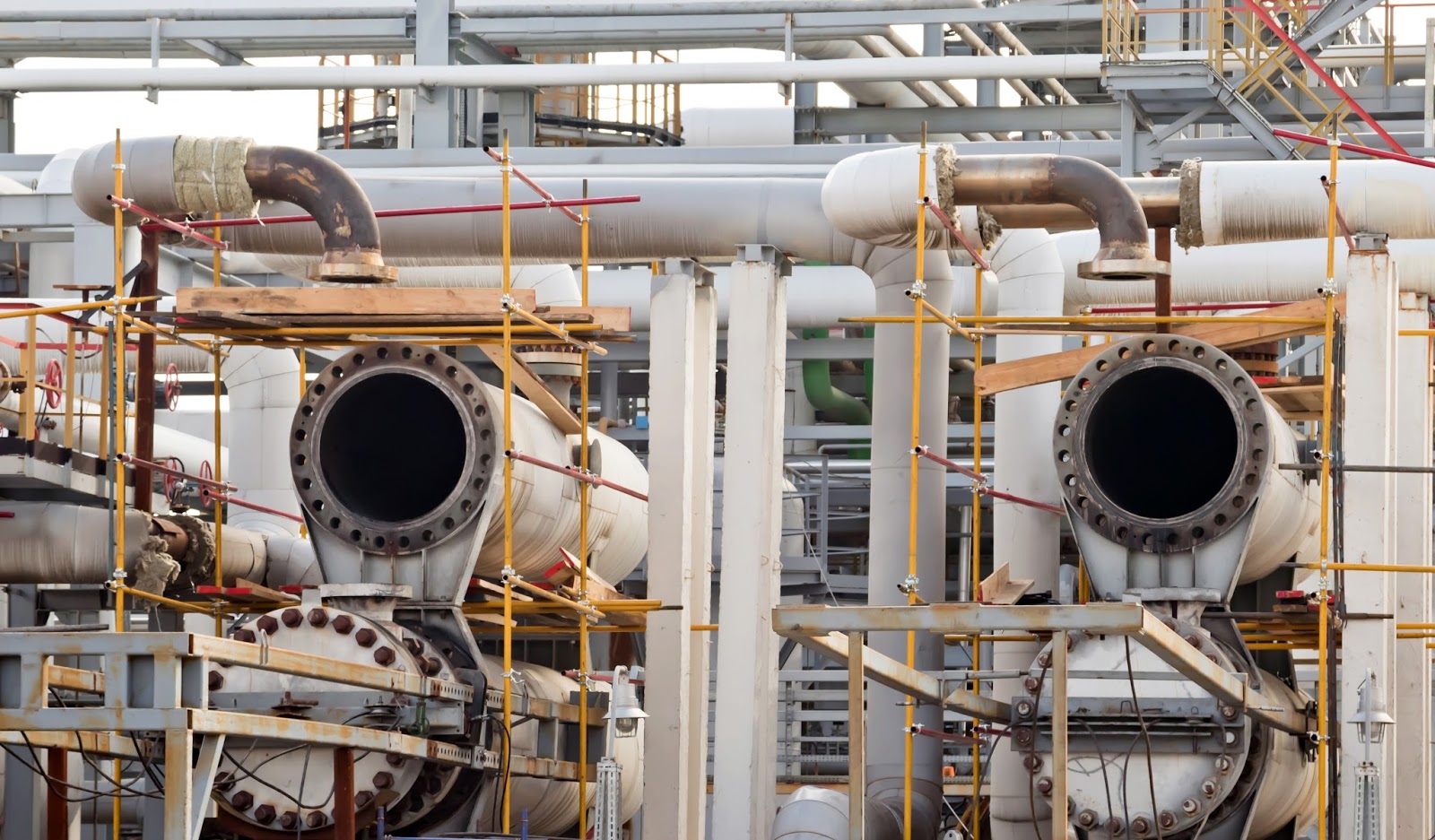Shell and tube heat exchangers are regularly employed throughout industrial and commercial sites as a means of producing heated or cooled fluids. They consist of a pressure vessel and an internal tube bundle. The flow paths of the pressure vessel and the tube bundle are isolated from one another, giving a shell and tube heat exchanger four nominal connections.
- Vessel inlet
- Vessel outlet
- Tube bundle inlet
- Tube bundle outlet
Most often, the subject process fluid to be heated or cooled will flow through the pressure vessel, contacting the surface of the tube bundle contained within. If the heat transfer fluid flowing through the tubes is warmer than the process fluid in the vessel, heat will conduct through the tube wall into the process fluid, increasing its temperature. If the fluid in the tube bundle is cooler than the process fluid in the vessel, the process operates in a reverse fashion. Construction details of shell and tube heat exchangers can vary, but the basic operating scheme remains constant.
The lack of moving parts and the ruggedly constructed nature of shell and tube heat exchangers tend to grant them a good measure of longevity for most applications. Regardless of any exceptions to that statement, there will eventually come a time when refurbishment or replacement is needed. If the pressure vessel is serviceable or can be made so with a reasonable amount of cost, replacing the tube bundle may be the main element of an operation aimed at returning the heat exchanger to like new service.
Tube bundles are just that, bundles of tubes. With the right set of dimensional information and specifications, an identical fabrication can be purchased and put in place. It is not always necessary to revisit the original manufacturer. If drawings are still on file for the unit, sufficient information can be gleaned from them to produce a replacement tube bundle that will provide rated performance.
Ordering up a replacement tube bundle is not complicated, but the operation can be smoothed out through contact with the involvement of an experienced engineer that can make sure all the necessary information is on hand and step you through the process.
